Alice Coucke
Conditioned Text Generation with Transfer for Closed-Domain Dialogue Systems
Nov 03, 2020



Abstract:Scarcity of training data for task-oriented dialogue systems is a well known problem that is usually tackled with costly and time-consuming manual data annotation. An alternative solution is to rely on automatic text generation which, although less accurate than human supervision, has the advantage of being cheap and fast. Our contribution is twofold. First we show how to optimally train and control the generation of intent-specific sentences using a conditional variational autoencoder. Then we introduce a new protocol called query transfer that allows to leverage a large unlabelled dataset, possibly containing irrelevant queries, to extract relevant information. Comparison with two different baselines shows that this method, in the appropriate regime, consistently improves the diversity of the generated queries without compromising their quality. We also demonstrate the effectiveness of our generation method as a data augmentation technique for language modelling tasks.
Small footprint Text-Independent Speaker Verification for Embedded Systems
Nov 03, 2020



Abstract:Deep neural network approaches to speaker verification have proven successful, but typical computational requirements of State-Of-The-Art (SOTA) systems make them unsuited for embedded applications. In this work, we present a two-stage model architecture orders of magnitude smaller than common solutions (237.5K learning parameters, 11.5MFLOPS) reaching a competitive result of 3.31% Equal Error Rate (EER) on the well established VoxCeleb1 verification test set. We demonstrate the possibility of running our solution on small devices typical of IoT systems such as the Raspberry Pi 3B with a latency smaller than 200ms on a 5s long utterance. Additionally, we evaluate our model on the acoustically challenging VOiCES corpus. We report a limited increase in EER of 2.6 percentage points with respect to the best scoring model of the 2019 VOiCES from a Distance Challenge, against a reduction of 25.6 times in the number of learning parameters.
Conditioned Query Generation for Task-Oriented Dialogue Systems
Nov 09, 2019



Abstract:Scarcity of training data for task-oriented dialogue systems is a well known problem that is usually tackled with costly and time-consuming manual data annotation. An alternative solution is to rely on automatic text generation which, although less accurate than human supervision, has the advantage of being cheap and fast. In this paper we propose a novel controlled data generation method that could be used as a training augmentation framework for closed-domain dialogue. Our contribution is twofold. First we show how to optimally train and control the generation of intent-specific sentences using a conditional variational autoencoder. Then we introduce a novel protocol called query transfer that allows to leverage a broad, unlabelled dataset to extract relevant information. Comparison with two different baselines shows that our method, in the appropriate regime, consistently improves the diversity of the generated queries without compromising their quality.
Efficient keyword spotting using dilated convolutions and gating
Nov 19, 2018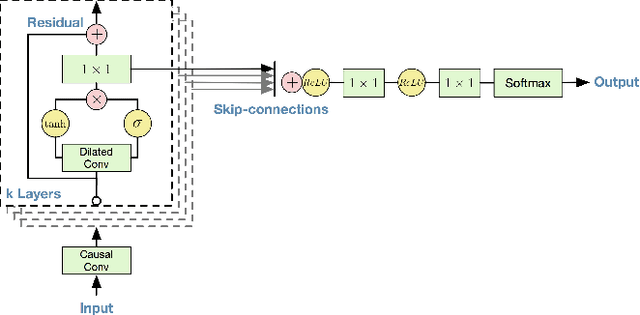

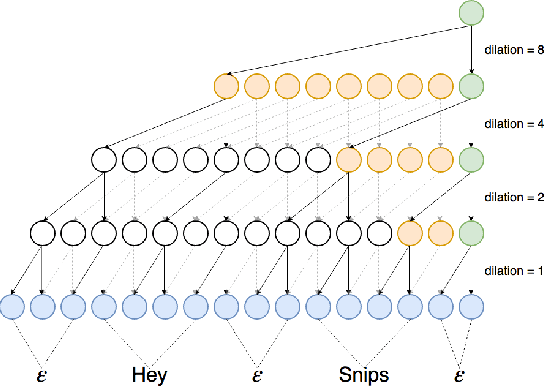

Abstract:We explore the application of end-to-end stateless temporal modeling to small-footprint keyword spotting as opposed to recurrent networks that model long-term temporal dependencies using internal states. We propose a model inspired by the recent success of dilated convolutions in sequence modeling applications, allowing to train deeper architectures in resource-constrained configurations. Gated activations and residual connections are also added, following a similar configuration to WaveNet. In addition, we apply a custom target labeling that back-propagates loss from specific frames of interest, therefore yielding higher accuracy and only requiring to detect the end of the keyword. Our experimental results show that our model outperforms a max-pooling loss trained recurrent neural network using LSTM cells, with a significant decrease in false rejection rate. The underlying dataset - "Hey Snips" utterances recorded by over 2.2K different speakers - has been made publicly available to establish an open reference for wake-word detection.
Snips Voice Platform: an embedded Spoken Language Understanding system for private-by-design voice interfaces
Nov 05, 2018



Abstract:This paper presents the machine learning architecture of the Snips Voice Platform, a software solution to perform Spoken Language Understanding on microprocessors typical of IoT devices. The embedded inference is fast and accurate while enforcing privacy by design, as no personal user data is ever collected. Focusing on Automatic Speech Recognition and Natural Language Understanding, we detail our approach to training high-performance Machine Learning models that are small enough to run in real-time on small devices. Additionally, we describe a data generation procedure that provides sufficient, high-quality training data without compromising user privacy.
Federated Learning for Keyword Spotting
Oct 31, 2018


Abstract:We propose a practical approach based on federated learning to solve out-of-domain issues with continuously running embedded speech-based models such as wake word detectors. We conduct an extensive empirical study of the federated averaging algorithm for the "Hey Snips" wake word based on a crowdsourced dataset that mimics a federation of wake word users. We empirically demonstrate that using an adaptive averaging strategy inspired from Adam in place of standard weighted model averaging highly reduces the number of communication rounds required to reach our target performance. The associated upstream communication costs per user are estimated at 8 MB, which is a reasonable in the context of smart home voice assistants. Additionally, the dataset used for these experiments is being open sourced with the aim of fostering further transparent research in the application of federated learning to speech data.
Spoken Language Understanding on the Edge
Oct 30, 2018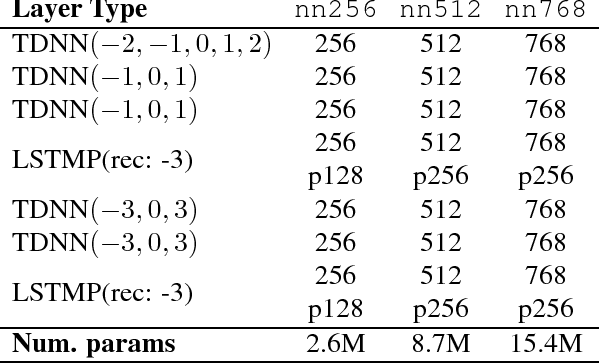



Abstract:We consider the problem of performing Spoken Language Understanding (SLU) on small devices typical of IoT applications. Our contributions are twofold. First, we outline the design of an embedded, private-by-design SLU system and show that it has performance on par with cloud-based commercial solutions. Second, we release the datasets used in our experiments in the interest of reproducibility and in the hope that they can prove useful to the SLU community.
Deep Representation for Patient Visits from Electronic Health Records
Mar 26, 2018
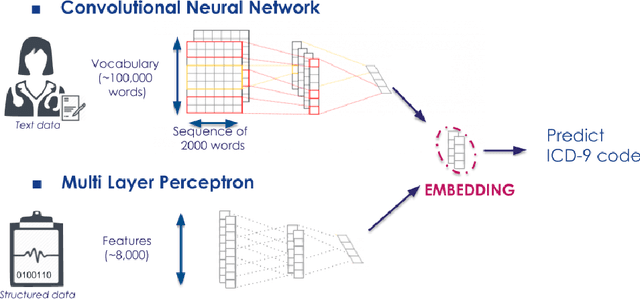

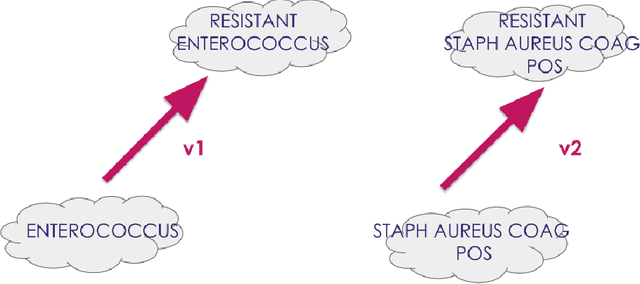
Abstract:We show how to learn low-dimensional representations (embeddings) of patient visits from the corresponding electronic health record (EHR) where International Classification of Diseases (ICD) diagnosis codes are removed. We expect that these embeddings will be useful for the construction of predictive statistical models anticipated to drive personalized medicine and improve healthcare quality. These embeddings are learned using a deep neural network trained to predict ICD diagnosis categories. We show that our embeddings capture relevant clinical informations and can be used directly as input to standard machine learning algorithms like multi-output classifiers for ICD code prediction. We also show that important medical informations correspond to particular directions in our embedding space.
 Add to Chrome
Add to Chrome Add to Firefox
Add to Firefox Add to Edge
Add to Edge